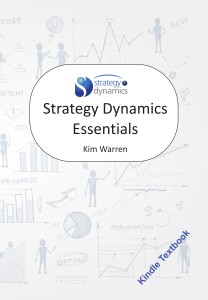Kim Warren on Strategy
Strategy insights and living business models
Cotton cycles ...
I see (www.cotlook.com) cotton prices have hit a 2½ year high on fears that the Pakistan floods will cut supply – the country produces nearly 7% of world supply. The dynamics of this are pretty easy to lay out, just like many other cyclical industries:
- The total of industry current capacity [a resource] determines maximum output
- … which balanced against current demand determines price through normal elasticity mechanisms.
- If prices rise, so do supplier-profits – and crucially, so do expected profits [an intangible]
- … which encourages producers to invest in new capacity.
- The flow of ‘new capacity per month’ enters an implicit resource of ‘capacity in development’.
- During the time this takes to come on-stream, prices remain high, encouraging still more suppliers to add to the flow of new capacity.
- Eventually the resource of ‘capacity in development’ is completed and flows into the resource of ‘current capacity’ – and since so many suppliers invested, the capacity resource quickly grows to exceed demand
- … so prices collapse, and suppliers make losses (which can be huge)
- … so the flow of new capacity additions fall to zero, and high-cost capacity gets shut down [an out-flow from current capacity].
- No-one likes to give up, so this may take some time, until the least efficient producers run out of cash [another resource] – during which period prices remain depressed.
- Lower prices stimulate rising demand, which eventually grows to overtake the falling capacity
- … so prices rocket upwards again.
Copyright © 2025 Kim Warren on Strategy. All rights reserved

